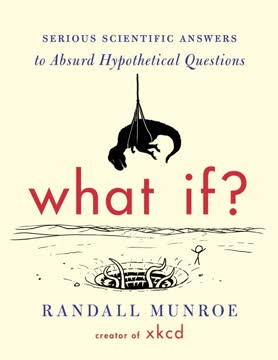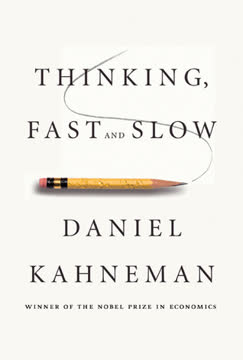Key Takeaways
1. Mental accounting influences decision-making by framing gains and losses
Mental accounting is the set of cognitive operations used by individuals and households to organize, evaluate, and keep track of financial activities.
Cognitive framework. Mental accounting serves as a psychological system for managing personal finances. It involves three key components:
- How outcomes are perceived and experienced
- How activities are assigned to specific accounts
- The frequency with which accounts are evaluated
Decision impact. This cognitive framework significantly influences financial decision-making:
- It affects how people evaluate gains and losses
- It shapes how individuals categorize and budget their money
- It determines how frequently people assess their financial situation
Violation of economic principles. Mental accounting often leads to violations of the economic principle of fungibility, where money in one account is not treated as a perfect substitute for money in another account.
2. The value function explains risk attitudes and framing effects
Loss aversion. Losing $100 hurts more than gaining $100 yields pleasure: υ(x) < −υ(−x).
Key characteristics. The value function in prospect theory has three essential features:
- It is defined over gains and losses relative to a reference point
- It is concave for gains and convex for losses (diminishing sensitivity)
- It is steeper for losses than for gains (loss aversion)
Risk attitudes. These properties explain the fourfold pattern of risk attitudes:
- Risk-seeking for gains and risk-aversion for losses of low probability
- Risk-aversion for gains and risk-seeking for losses of high probability
Framing effects. The value function helps explain why different descriptions of the same choice problem can lead to different preferences, violating the invariance principle of rational choice theory.
3. Transaction utility affects consumer choices and spending behavior
Acquisition utility is a measure of the value of the good obtained relative to its price, similar to the economic concept of consumer surplus.
Dual utility model. Consumers derive two types of utility from a purchase:
- Acquisition utility: The value of the good relative to its price
- Transaction utility: The perceived value of the "deal"
Reference price. Transaction utility is defined as the difference between the amount paid and the "reference price" for the good, which is the price the consumer expects to pay.
Consumer behavior. This model explains several observed phenomena:
- Why people sometimes buy things primarily because they are good deals
- Why consumers might avoid purchases that would seemingly make them better off
- The effectiveness of sales tactics that emphasize savings relative to regular prices
4. Mental accounting violates the principle of fungibility
The introduction of psychological considerations (e.g., framing) both enriches and complicates the analysis of choice.
Non-fungibility. Mental accounting leads to violations of fungibility in several ways:
- Money in different accounts is not treated as interchangeable
- The source of income affects how it is spent
- The way costs and benefits are framed influences decisions
Decision distortions. These violations can lead to suboptimal financial decisions:
- Holding high-interest debt while maintaining low-interest savings
- Spending windfalls differently from regular income
- Making different choices based on how options are presented
Economic implications. The lack of fungibility in mental accounting challenges traditional economic models and has significant implications for consumer behavior, saving patterns, and market inefficiencies.
5. Budgeting and categorization impact financial decisions
Dividing spending into budget categories serves two purposes. First, the budgeting process can facilitate making rational trade-offs between competing uses for funds. Second, the system can act as a self-control device.
Categorization effects. People often categorize their money into different mental accounts:
- Expenditures grouped into budgets (e.g., food, housing)
- Wealth allocated into accounts (e.g., checking, pension, emergency fund)
- Income divided into categories (e.g., regular or windfall)
Budget constraints. These categories can create artificial constraints:
- Reluctance to spend from certain accounts, even when financially optimal
- Overspending in some categories while under-spending in others
- Differential treatment of money based on its source or designation
Decision-making impact. Budgeting and categorization influence various financial decisions:
- Consumption choices
- Saving behavior
- Risk-taking in investments
6. Self-control strategies shape spending and saving habits
Another way of dealing with self-control problems is to place funds in accounts that are off-limits.
Temptation hierarchy. People create a hierarchy of money locations based on temptation to spend:
- Most tempting: Cash, checking accounts
- Less tempting: Savings accounts, stocks, bonds
- Least tempting: Home equity, retirement accounts
Self-control devices. Various strategies are employed to manage spending:
- Setting intentionally low budgets for certain categories
- Buying smaller quantities of tempting goods at higher unit prices
- Using mental accounts to restrict access to certain funds
Saving behavior. These strategies influence saving patterns:
- Higher propensity to save money in less tempting accounts
- Effectiveness of retirement savings vehicles like IRAs and 401(k)s
- Preference for receiving dividends rather than capital gains
7. Choice bracketing affects risk-taking behavior and decision outcomes
If a series of gambles are bracketed together then the outcome of one gamble can affect the choices made later.
Bracketing effects. How choices are grouped or "bracketed" influences decision-making:
- Narrow bracketing: Evaluating each decision in isolation
- Broad bracketing: Considering decisions as part of a larger set
Risk-taking behavior. Prior outcomes affect subsequent risk choices:
- "House money effect": Prior gains can stimulate risk-seeking
- "Break-even effect": Prior losses may encourage risk-seeking if there's a chance to recover losses
Real-world implications. These effects are observed in various domains:
- Gambling behavior (e.g., betting patterns in horse races)
- Investor behavior in financial markets
- Consumer spending patterns following windfall gains or losses
8. Income source and labeling influence spending patterns
People have a tendency to match the seriousness of the source of some windfall with the use to which it is put.
Source effects. The origin of money affects how it is spent:
- Regular income vs. windfall gains
- Earned income vs. unearned income (e.g., gifts, lottery winnings)
- Serious vs. frivolous sources of income
Labeling impact. How income or accounts are labeled influences their use:
- Designated funds (e.g., child allowance) are more likely to be used for their intended purpose
- Dividend payments are treated differently from capital gains
- "Mental accounts" for different types of expenses or savings goals
Spending behavior. These effects lead to observable spending patterns:
- Different marginal propensities to consume from various income sources
- Tendency to spend windfalls more freely than regular income
- Matching of "serious" income to serious expenses and "frivolous" income to frivolous expenses
</rewrite>
Last updated:
FAQ
What's Choices, Values, and Frames about?
- Exploration of Decision-Making: The book examines how people make choices under risk and uncertainty, challenging traditional economic models of rational decision-making.
- Prospect Theory: It introduces Prospect Theory, developed by Daniel Kahneman and Amos Tversky, which explains how people evaluate potential losses and gains.
- Behavioral Economics: The text highlights the psychological factors influencing economic behavior, emphasizing cognitive biases like loss aversion and framing effects.
Why should I read Choices, Values, and Frames?
- Influential Research: The book is a cornerstone of behavioral economics, offering insights that have shaped modern understanding of decision-making.
- Practical Applications: Concepts discussed can be applied to personal finance, marketing, and public policy, enhancing decision-making strategies.
- Interdisciplinary Relevance: It provides valuable insights for those interested in psychology, economics, and political science.
What are the key takeaways of Choices, Values, and Frames?
- Loss Aversion: People are more sensitive to losses than equivalent gains, influencing their risk-taking behavior.
- Framing Effects: The presentation of choices can significantly alter decisions, highlighting the importance of context.
- Nonlinear Probability Weighting: Individuals tend to overweight small probabilities and underweight larger ones, leading to irrational choices.
What is Prospect Theory as defined in Choices, Values, and Frames?
- Alternative to Utility Theory: Prospect Theory offers a framework for understanding decision-making under risk, contrasting with expected utility theory.
- Value Function: It suggests that the value function is concave for gains and convex for losses, indicating diminishing sensitivity to changes in wealth.
- Decision Weights: The theory introduces decision weights, reflecting how people perceive probabilities differently from their actual values.
How does framing influence decision-making according to Choices, Values, and Frames?
- Context Matters: The book shows that the framing of choices can lead to different decisions, even with the same underlying facts.
- Example of Framing: Participants preferred a sure gain over a gamble when framed as saving lives, but preferred the gamble when framed as lives lost.
- Implications for Choices: This highlights the importance of presentation in influencing decisions, suggesting awareness of framing effects is crucial.
What is the significance of loss aversion in Choices, Values, and Frames?
- Greater Impact of Losses: Loss aversion explains why individuals are often risk-averse, avoiding losses even when potential gains are present.
- Endowment Effect: People value items more once they own them, leading to reluctance to trade or sell, a direct consequence of loss aversion.
- Behavioral Economics: This concept challenges the assumption of rationality in economic models, affecting consumer behavior and market dynamics.
How does Choices, Values, and Frames challenge traditional economic theories?
- Behavioral Insights: The book argues that traditional models fail to account for cognitive biases that influence real-world behavior.
- Empirical Evidence: Numerous studies demonstrate deviations from classical economic predictions, particularly in risk and uncertainty contexts.
- Implications for Policy: By integrating psychological insights, the book suggests better decision-making frameworks for individuals and organizations.
What is the endowment effect as described in Choices, Values, and Frames?
- Definition of Endowment Effect: People assign greater value to items they own compared to those they do not, leading to irrational decision-making.
- Experimental Evidence: Experiments show participants value owned items higher than similar non-owned items, illustrating ownership's impact on perceived value.
- Implications for Decision-Making: This effect can lead to suboptimal choices, such as holding onto losing investments or overpricing possessions.
What is the Peak-End rule in Choices, Values, and Frames?
- Definition of Peak-End Rule: People judge experiences based on their most intense moments and their conclusion, rather than the overall duration.
- Implications for Memory: This explains why a painful experience may be remembered more favorably if it ends on a less painful note.
- Research Evidence: Studies, such as those involving medical procedures, show evaluations correlate more with peak and end moments than with duration.
How does Choices, Values, and Frames explain intertemporal choice?
- Discounting Future Outcomes: Individuals often prefer immediate gratification over delayed rewards, leading to a preference for present over future benefits.
- Negative Time Preference: People may prefer improving sequences of outcomes, indicating a complex relationship with time and value.
- Framing Effects: The framing of choices can alter perceptions of time preference, demonstrating the significant role of context.
What are some notable quotes from Choices, Values, and Frames and what do they mean?
- "Losses loom larger than gains.": This encapsulates loss aversion, highlighting its impact on decision-making.
- "The framing of decisions can significantly alter preferences.": This emphasizes the critical role of context in shaping choices.
- "People do not evaluate prospects by the expectation of their monetary outcomes, but rather by the expectation of the subjective value of these outcomes.": This reflects the core idea of Prospect Theory, distinguishing between objective and subjective evaluations.
What are the implications of the findings in Choices, Values, and Frames for public policy?
- Policy Framing: How policies are framed can significantly affect public acceptance and behavior, suggesting careful consideration of messaging.
- Long-Term Planning: Understanding intertemporal choice and loss aversion can aid in designing policies that encourage future-oriented behaviors.
- Behavioral Insights: Incorporating behavioral insights into policy design can lead to more effective outcomes by aligning with actual decision-making processes.
Review Summary
Readers find Choices, Values, and Frames insightful but challenging. Many praise its scientific approach to human irrationality and decision-making, highlighting its value for understanding personal biases. Some reviewers appreciate the collection of academic papers and their groundbreaking perspectives on traditional economic assumptions. However, others criticize the dry writing style and suggest that more accessible works like "Thinking Fast and Slow" cover similar content more efficiently. Despite its academic nature, the book is generally well-regarded for its contributions to behavioral economics.
Similar Books










Download PDF
Download EPUB
.epub digital book format is ideal for reading ebooks on phones, tablets, and e-readers.








